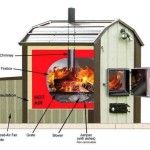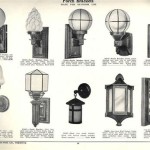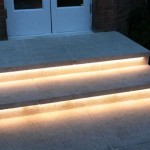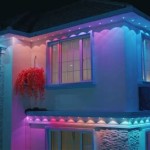What Is The Best Fabric For Outdoor Furniture Covers?
Protecting outdoor furniture from the elements is essential for maintaining its longevity and aesthetic appeal. Exposure to sun, rain, wind, and debris can lead to fading, cracking, mildew growth, and general wear and tear. Investing in high-quality outdoor furniture covers fabricated from durable materials is a proactive approach to preserving furniture's condition and extending its lifespan. The selection of the optimal fabric for these covers hinges on a variety of factors, including climate, usage frequency, and desired level of protection. There is no single "best" fabric for all scenarios; the ideal choice will depend on a careful evaluation of individual needs and priorities.
The primary function of an outdoor furniture cover is to shield furniture from environmental damage. Therefore, key considerations when evaluating fabric options include water resistance, UV resistance, breathability, durability, and ease of maintenance. A truly effective fabric will balance these attributes, providing comprehensive protection without compromising practicality. This necessitates a detailed understanding of the properties and limitations of various fabric types commonly used in outdoor furniture cover manufacturing.
Understanding Key Fabric Properties
Several properties determine the suitability of a fabric for use in outdoor furniture covers. These properties directly impact the fabric's ability to withstand the elements and protect the furniture underneath.
Water Resistance: This refers to the fabric's ability to repel water and prevent it from soaking through. Highly water-resistant fabrics are crucial in areas with frequent rainfall or high humidity, as they prevent water from accumulating on the furniture and potentially causing damage like mildew or rot. The term water-resistant doesn't necessarily mean waterproof. Water-resistant fabrics can withstand light rain for an extended period, but prolonged exposure to heavy rain may eventually lead to water penetration. A waterproof fabric, on the other hand, is completely impenetrable by water.
UV Resistance: Prolonged exposure to ultraviolet (UV) radiation from the sun can cause fabrics to fade, weaken, and become brittle. UV-resistant fabrics contain additives or are constructed using materials that block or absorb UV rays, thereby protecting the underlying furniture from sun damage. Fabrics with a higher UV protection factor (UPF) offer greater protection.
Breathability: While water resistance is essential, breathability is equally important. A breathable fabric allows moisture vapor to escape, preventing condensation from building up inside the cover. This is crucial for preventing mold and mildew growth, which can damage both the furniture and the cover itself. Non-breathable, completely waterproof covers can trap moisture, creating a humid environment conducive to microbial growth.
Durability: The durability of a fabric refers to its ability to withstand wear and tear, abrasion, and puncture. A durable fabric will resist ripping, tearing, and fading, ensuring that the cover remains effective and aesthetically pleasing for an extended period. Factors such as thread count, weave density, and the inherent strength of the fibers contribute to a fabric's overall durability.
Ease of Maintenance: Outdoor furniture covers are exposed to dirt, dust, pollen, and other debris. Choosing a fabric that is easy to clean and maintain will save time and effort. Fabrics that are machine washable or easily wiped down with a damp cloth are generally preferred. Resistance to staining is also a desirable characteristic.
Common Fabric Types for Outdoor Furniture Covers
Several different fabric types are commonly used in the manufacture of outdoor furniture covers, each with its own unique set of advantages and disadvantages. Understanding these distinctions is crucial for making an informed decision.
Polyester: Polyester is a synthetic fabric known for its durability, water resistance, and UV resistance. It is relatively inexpensive and widely available, making it a popular choice for outdoor furniture covers. High-denier polyester fabrics offer enhanced tear resistance and water repellency. Polyester is also relatively easy to clean and maintain. However, polyester is not as breathable as some other fabrics, and it can become stiff and uncomfortable in cold weather.
Acrylic: Acrylic fabrics are known for their exceptional UV resistance and colorfastness. They are highly resistant to fading, even after prolonged exposure to sunlight. Acrylic fabrics are also water-repellent and breathable, making them a good choice for preventing mold and mildew growth. Solution-dyed acrylics (such as Sunbrella) are particularly durable and long-lasting, as the color is integrated into the fibers rather than applied to the surface. However, acrylic fabrics are generally more expensive than polyester.
Olefin: Olefin is another synthetic fabric that is known for its strength, colorfastness, and resistance to staining and mildew. It is also relatively lightweight and easy to clean. Olefin fabrics are often used in marine applications, as they are resistant to salt water and UV degradation. While Olefin is generally water resistant, it won't provide the same level of waterproof protection as other materials. Olefin is often more eco-friendly than other synthetic options.
Vinyl: Vinyl is a waterproof and highly durable fabric that provides excellent protection from the elements. It is relatively inexpensive and easy to clean. However, vinyl is not breathable and can become hot and sticky in warm weather. Trapped moisture can lead to mold and mildew growth underneath the cover. Vinyl can also become brittle and crack over time, especially in cold climates. For this reason, it’s often reinforced with polyester backing.
Canvas: Canvas is a durable, tightly woven fabric typically made from cotton or linen. While natural canvas is not inherently water-resistant, it can be treated with waterproofing agents to provide protection from the elements. Canvas fabrics are generally breathable and provide good protection from sunlight. However, untreated canvas is susceptible to mildew growth and can fade over time. Treated canvas requires periodic re-treatment to maintain its water resistance.
Polyethylene: Polyethylene is a durable, waterproof material often used in lower-cost covers. It is typically not breathable and can trap moisture, which could result in mold and mildew. It is not as durable as some of the other materials listed and may be prone to tearing. UV resistance is typically low in basic polyethylene covers, causing them to degrade relatively quickly in direct sunlight.
Factors Influencing Fabric Selection
The selection of the most suitable fabric for outdoor furniture covers depends on a variety of factors related to the specific environment and usage patterns.
Climate: The prevailing climate is a major determinant of fabric choice. In areas with frequent rainfall or high humidity, water-resistant or waterproof fabrics are essential. In sunny climates, UV-resistant fabrics are crucial for preventing fading and degradation. In areas with extreme temperature fluctuations, fabrics that can withstand both heat and cold without cracking or becoming brittle are preferred.
Furniture Type: The type of furniture being covered can also influence fabric selection. For delicate or valuable furniture, a breathable fabric that prevents condensation and mildew growth is particularly important. For heavy or bulky furniture, a durable fabric that can withstand abrasion and tearing is essential.
Storage Frequency: If the furniture is frequently covered and uncovered, a lightweight and easy-to-handle fabric is desirable. If the furniture is covered for extended periods, breathability becomes even more important to prevent moisture buildup. The ease of cleaning and maintaining the fabric should also be considered if the covers are used frequently.
Budget: The cost of the fabric is another factor to consider. While investing in a high-quality fabric may provide better protection and longevity, it may also be more expensive. It is important to balance the desired level of protection with the available budget.
The best fabric for outdoor furniture covers is a nuanced decision that requires consideration of all these factors. Choosing the correct material will provide the best possible defense against the elements, preserving the furniture for years to come.

Best Fabric For Outdoor Furniture And Cushions
The 14 Best Outdoor Furniture Covers Of 2024

Best Outdoor Furniture Covers Buyer Guide Reviews 2024

Patio Furniture Covers 213x132x74cm Heavy Duty Oxford Polyester 600d Outdoor Garden Table Chair Set Waterproof Rectangle Black Sofa Beach Cover Com

Covermates Elite Cover

Buy Whole China Outdoor Furniture Covers Waterproof Rain Snow Dust Wind Proof Anti Uv Oxford Fabric Garden Lawn Patio At Usd 6 48 Global Sources

How To Dye Outdoor Cushion Covers Alice And Lois

Vailge 2 Seater Heavy Duty Patio Bench Loveseat Cover 100 Waterproof Outdoor Sofa Lawn Furniture Covers With Air Vent Small Standard Beige Brown Com

Garden Furniture Cover Waterproof Outdoor Covers Heavy Duty Oxford Fabric Patio Set Rectangular Windproof And Anti Uv Table Chairs Sofa 1709470cm

Regent Sunbrella Patio Covers Bench
Related Posts







